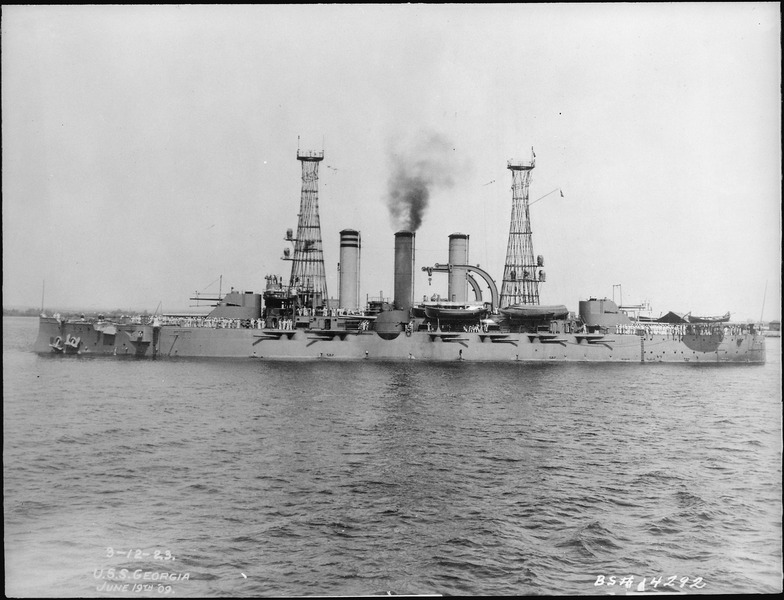- Joined
- May 26, 2010
- Messages
- 31,122
- Likes
- 41,041
General Dynamics Bath Iron Works Lays Keel of DDG 1000, First Zumwalt-class Destroyer
November 18, 2011
BATH, Maine – On Thursday, November 17, General Dynamics Bath Iron Works celebrated the keel laying of Zumwalt (DDG 1000), the first ship in the planned three-ship Zumwalt class of guided-missile destroyers.
The keel unit is the 4,000-ton, heavily outfitted mid-forebody section of the ship, which was moved from the shipyard's Ultra Hall construction facility onto the building ways in late October




The ship is named for ADM Elmo Zumwalt (1920-2000), regarded as the father of the modern Navy. He served with distinction on destroyers during WWII in the Pacific and later oversaw littoral operations during the Vietnam War. In 1970, he was named the youngest-ever chief of naval operations. He applied his vast knowledge of sailors and ships to modernize the U.S. Navy, introducing major policy changes to boost morale and create greater efficiency while also conducting a campaign against racism and sexism throughout the fleet.
A special steel plate containing the initials of ADM Zumwalt's four children, daughters and ship co-sponsors Ann Zumwalt and Mouzetta Zumwalt-Weathers, LtCol James G. Zumwalt, USMC (Ret.), and Elmo Zumwalt III, now deceased, was prepared for the ceremony. The co-sponsors authenticated the laying of the keel by striking welding arcs onto the steel plate, assisted by Carl Pepin, a 33-year BIW welder.
The principal speaker was RDML Ann C. Phillips, USN, Director Surface Warfare Division, in the Office of the Chief of Naval Operations. Jeff Geiger, Bath Iron Works president, said, "We were pleased to have members of the Zumwalt family and distinguished Navy representatives with us to commemorate this important milestone in the construction of this ship."
The DDG-1000 Zumwalt-class destroyer is the U.S. Navy's next-generation, guided-missile naval destroyer, leading the way for a new generation of advanced multi-mission surface combat ships.
The ships will feature a low radar profile, an integrated power system and a total ship computing environment infrastructure.
Armed with an array of weapons, the Zumwalt-class destroyers will provide offensive, distributed and precision fires in support of forces ashore.
Bath Iron Works is the lead designer and builder for the program which employs approximately 5,500 people.
Page Unavailable
November 18, 2011
BATH, Maine – On Thursday, November 17, General Dynamics Bath Iron Works celebrated the keel laying of Zumwalt (DDG 1000), the first ship in the planned three-ship Zumwalt class of guided-missile destroyers.
The keel unit is the 4,000-ton, heavily outfitted mid-forebody section of the ship, which was moved from the shipyard's Ultra Hall construction facility onto the building ways in late October




The ship is named for ADM Elmo Zumwalt (1920-2000), regarded as the father of the modern Navy. He served with distinction on destroyers during WWII in the Pacific and later oversaw littoral operations during the Vietnam War. In 1970, he was named the youngest-ever chief of naval operations. He applied his vast knowledge of sailors and ships to modernize the U.S. Navy, introducing major policy changes to boost morale and create greater efficiency while also conducting a campaign against racism and sexism throughout the fleet.
A special steel plate containing the initials of ADM Zumwalt's four children, daughters and ship co-sponsors Ann Zumwalt and Mouzetta Zumwalt-Weathers, LtCol James G. Zumwalt, USMC (Ret.), and Elmo Zumwalt III, now deceased, was prepared for the ceremony. The co-sponsors authenticated the laying of the keel by striking welding arcs onto the steel plate, assisted by Carl Pepin, a 33-year BIW welder.
The principal speaker was RDML Ann C. Phillips, USN, Director Surface Warfare Division, in the Office of the Chief of Naval Operations. Jeff Geiger, Bath Iron Works president, said, "We were pleased to have members of the Zumwalt family and distinguished Navy representatives with us to commemorate this important milestone in the construction of this ship."
The DDG-1000 Zumwalt-class destroyer is the U.S. Navy's next-generation, guided-missile naval destroyer, leading the way for a new generation of advanced multi-mission surface combat ships.
The ships will feature a low radar profile, an integrated power system and a total ship computing environment infrastructure.
Armed with an array of weapons, the Zumwalt-class destroyers will provide offensive, distributed and precision fires in support of forces ashore.
Bath Iron Works is the lead designer and builder for the program which employs approximately 5,500 people.
Page Unavailable















